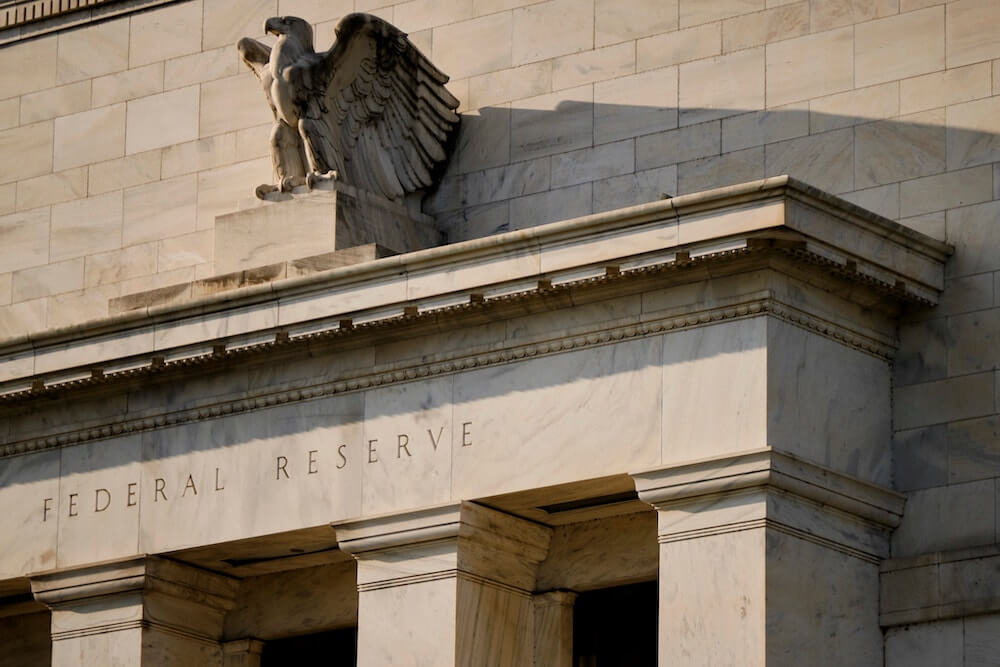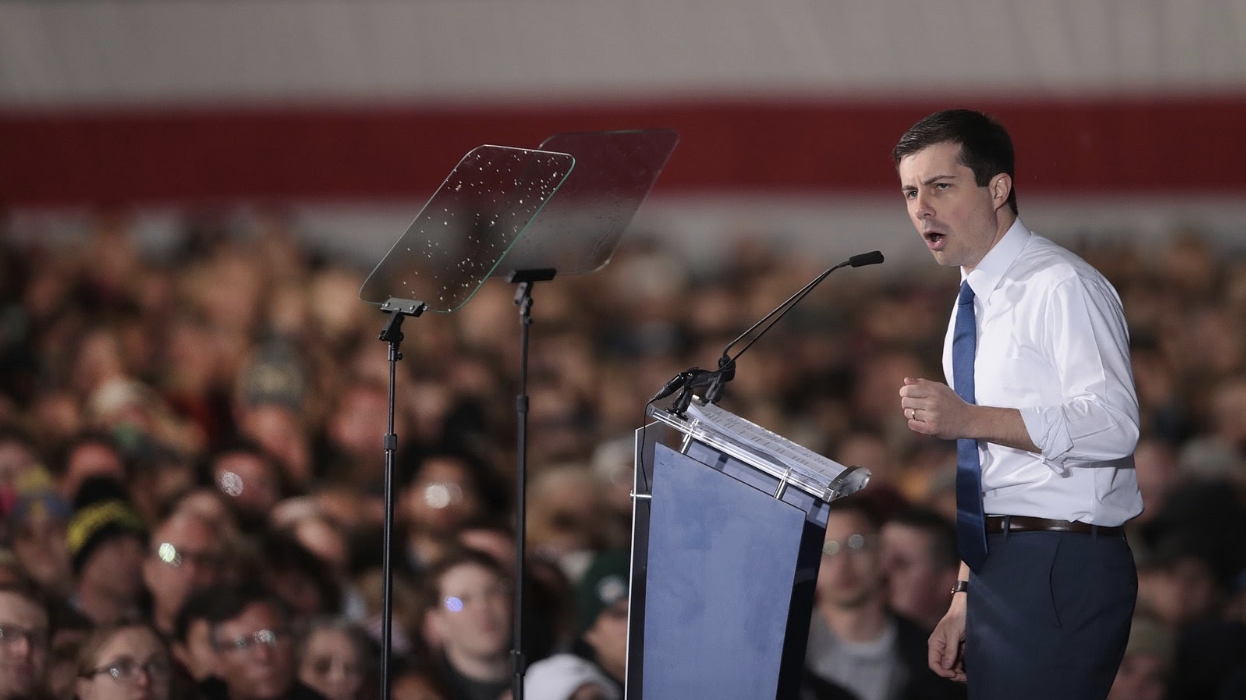
VASANTH KUMAR – FEBRUARY 15TH, 2021
EDITOR: CHAZEL HAKIM
The great banking innovation of the 20th century was deposit insurance, a policy that ended the bank runs that had plagued American banks throughout the 19th century. The creation of the Federal Deposit Insurance Corporation in 1933 (and later, the National Credit Union Administration in 1970) ensured that no future generations of savers would need to worry about the threat of default from banking institutions. The idea of a bank run today would be ludicrous. However, there are still significant problems with banking: savings accounts typically pay paltry interest rates, millions of Americans have little to no access to quality banking services, and assets that earn a higher return can force savers into unwanted risk. American banking is now in need of reformation and innovation befitting the issues unique to the 21st century.
A potential policy recommendation was posed in 2018 by three researchers, two of whom worked in the Treasury Department. Under their proposal, the Federal Reserve would offer the option to all individuals and businesses in the United States to open a bank account, termed a “Fed Account,” with the Federal Reserve itself, providing an alternative to private banks or credit unions. Such an option could have significant effects on a wide array of monetary and economic issues.
Currently, the Federal Reserve prohibits individuals from opening accounts with any Federal Reserve Banks; this privilege is restricted to depository institutions, domestic and foreign. Notable among these institutions are large banks, such as Wells Fargo and Bank of America, known as “national banks.” The name is deceptive; while chartered by the Department of the Treasury, national banks are privately held. National banks are distinct from smaller businesses or banks because they possess an account with one of the 13 Federal Reserve Banks in the United States. Known as reserve balances, these accounts earn interest at the “interest on reserves” (IOR) rate. The Federal Reserve leverages its power over interest rates by changing this IOR rate, indirectly adjusting the “federal funds” rate on the money loaned between these institutions. Separately, banks that hold a reserve balance with a Reserve Bank are a key channel through which the Federal Reserve conducts its stabilization monetary policy; as the “lender-of-last-resort” to these banks, the Federal Reserve can offer much-needed loans to banks in dire need of money to cover financial obligations. After the passage of the Depository Institutions Deregulation and Monetary Control Act of 1980, this access to loans was expanded from just national banks to any depository institutions that met the Federal Reserve’s reserve requirement.
It is widely recognized that holding a reserve balance provides banks with access to liquidity and helps the Federal Reserve set interest rates. However, just as important is having access to a secure savings facility that pays a high IOR rate. The Fed Account proposal would seek to expand this access even more to individuals and businesses. From the perspective of an individual, a Fed Account would be practically identical to an ordinary private bank account. If implemented, the proposal would create a suite of usual banking services, including debit cards, ATM access, and direct deposit. Such centralization would facilitate peer-to-peer, real-time payments (not unlike transactions on Venmo) without requiring the behind-the-scenes coordination between banks. Furthermore, assuming that account holders earn 1.75% interest, the IOR rate that national banks received prior to the COVID-19 pandemic, holders’ return on savings would vastly exceed the return offered by traditional savings accounts, which offer 0.08% on average. In addition to these benefits, Fed Accounts would actually increase government revenue because of “seigniorage;” that is, the Federal Reserve’s portfolio of assets would generate more revenue than incurred interest payments and expenses.
The real novelty of Fed Accounts occurs beyond the individual user’s experience. One major implication would be a potential new tool with which the federal government could conduct monetary policy. Currently, direct economic assistance to individuals is limited to fiscal policy. Most recently, the CARES Act, which included the $1,200 per person “stimulus checks,” was paid for by the Department of the Treasury and was issued directly into Americans’ bank accounts by the IRS. However, this process was mired with glitches that affected millions of people, particularly those with dependent children or those who used tax preparer services. Six months later, the current negotiations over a second stimulus package have been stalled by electoral and partisan politics. These instances are illustrative of the dangerous volatility that besets discretionary fiscal policy, an inevitable product of Congress’s power of the purse.
The Federal Reserve is not beholden to such contingencies. In addition to cutting target interest rates in response to the COVID-19 pandemic, the Federal Reserve has undertaken numerous debt purchases and loan extensions intended to calm capital markets; these have been especially successful in the corporate debt and treasury security markets. These policies are best suited to the Federal Reserve’s core strategy, which revolves around the idea of “pass-through.” In short, “pass-through” is the notion that the set rate for large banks will pass through to the wider economy and thus indirectly influence the rates on debt that actually impacts everyday Americans (such as mortgages or car loans). The Federal Reserve’s current monetary toolkit is not designed for more direct policies. It has seen less success in its programs to directly extend or guarantee credit to individuals, state and local governments, and small and medium businesses; notable among these were the Municipal Lending Facility and the Main Street Lending Program, the latter of which suffered from weak participation by banks and borrowers alike. Fed Accounts could help ameliorate this weakness. Effectively achieving the same outcome as the Treasury’s stimulus package, Fed Accounts could allow the Federal Reserve to automatically credit the accounts of individuals and businesses as opposed to writing a check. This direct aid would avoid the uncertainty of Congress and inefficacy of the Federal Reserve’s attempts to peddle loans directly.
Furthermore, Fed Accounts would address more fundamental issues in banking. Most importantly, they would lessen, if not eliminate, the need for widespread deposit insurance, as deposits in a Federal Reserve Bank cannot be defaulted on. This characteristic of Fed Accounts hinges on the fact that the actual money held by an account holder on, say, a debit card takes two very different forms depending on the institution that issued the card. A private bank’s debit card is holding the liability of the bank, and so it is backed by the ability of the bank to meet its liabilities to all its depositors. In contrast, a debit card issued by the Federal Reserve would hold “pure sovereign money,” or the liability of the Federal Reserve itself. This difference is key in the prevention of defaults; by definition, the Federal Reserve is itself the institution that issues sovereign money, so any liability held by an account holder can always be met by just issuing more money if its depositors wish to withdraw money from their account.
Second, while deposit insurance already alleviated the threat of default on private banks’ liabilities, an increasingly important exception has been the panic that arises from “defaults” on uninsured alternatives to private bank deposits, including mutual funds, commercial paper, and bonds. The possibility of a third option, a Fed Account, could ease this financial volatility and offer a compelling alternative that pays significantly more interest than an equally secure private bank account.
Finally, Fed Accounts would also help “unbanked” Americans who lack access to a checking, savings, or money-market account. In 2019, 5.4% of Americans were unbanked; notably, two-fifths of the unbanked used alternative financial services, including payday loans, pawn shop loans, or money advances, which can take advantage of savers’ situation by charging exorbitant interest rates. Additionally, 16% of Americans were “underbanked,” meaning they had access to traditional saving facilities but also used alternative financial services. Unbanking and underbanking harm the financial well-being of millions of Americans that do not have access to quality saving services, specifically targeting the poor, uneducated, and those in minority groups. As a public option available to all U.S. citizens, residents, and businesses, Fed Accounts would not charge membership fees or require minimum balances, connecting the unbanked with a public alternative to nonexistent or predatory private banking services.
Altogether, Fed Accounts seem to provide an innovative instrument for individuals and businesses. However, there are two main criticisms of the Fed Account plan, the first of which concerns efficacy and safety. Expanding the Federal Reserve’s powers would necessitate an amendment to the Federal Reserve Act, extending its account privileges to individuals and businesses via legislation. Even if the Federal Reserve were given these powers, the technical problems in the administration of the Treasury’s stimulus package could also occur if the Federal Reserve were tasked with maintaining the accounts of potentially tens of millions of Americans. Part of this maintenance also includes the protection of individual’s information and deposits, requiring an expansion of its existing cybersecurity, anti-money laundering, and fraud prevention efforts.
However, these issues are not insurmountable. Fed Accounts could be subject to the same privacy protection laws as private banks, including the Privacy Act of 1974. And, although the Federal Reserve would be restrained from protecting individual victims of fraud, constructing similar crime prevention and information collection models as the Department of Homeland Security and the IRS would significantly reduce the threat of systemic fraud. Ultimately, the Federal Reserve would have the full support of the federal government in developing and enforcing a sufficient privacy and crime prevention framework.
The second category of issues, and arguably the more credible, is whether Fed Accounts are even necessary. For instance, although unbanking affects millions of people, the proportion of unbanked households has steadily decreased, absent any coordinated policy, from 8.8% in 2011 to 5.4% today. Notably, the FDIC attributes a statistically significant portion of this decrease to fundamental changes in banking that are not just caused by improvements in households’ socioeconomic standing. Furthermore, deposit insurance already protects private bank deposits, and while uninsured alternatives present significant risks to both depositors and institutions today, a third option could arise without the Federal Reserve. Today, fintech innovation has been mostly built upon existing banking infrastructure (e.g. online or mobile payment services are directly connected to bank accounts rather than offering alternative saving or investment instruments). However, the development of new, centralized, and secure services in the future may eliminate depositors’ need for alternatives to banks or assets.
These concerns are legitimate, but the potential of Fed Accounts should not be brushed aside as trivial or unnecessary. While deposit insurance helped to stabilize private banking for Americans in the 20th century, the world has changed. The negligible returns on bank accounts and volatility of uninsured financial assets leave American savers in the 21st century between a rock and a hard place, and a third option is now essential. Furthermore, the shortcomings of the COVID-19 stimulus package have called into question whether traditional fiscal and monetary policy are sufficiently and directly beneficial to individuals, businesses, and state and local governments. Fed Accounts could satisfy this unfulfilled need by providing high returns and security for savers, expanding the reach of banking services to all Americans, and enhancing the power of the Federal Reserve in carrying out its mandate.
Featured Image Source: The New York Times
Disclaimer: The views published in this journal are those of the individual authors or speakers and do not necessarily reflect the position or policy of Berkeley Economic Review staff, the Undergraduate Economics Association, the UC Berkeley Economics Department and faculty, or the University of California, Berkeley in general.



